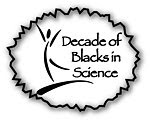I admit it is a pleasant challenge trying to figure out HOW to present science on this blog for general audiences. Albeit my limited training in Interpretation has certainly made me more cognizant of how hard it can be for a traditionally-trained science professional to present science to lay people. It really is interpretation or translation in the literal sense -- finding examples or words to explain things (about science) that are more relevant and real and practical to everyday people.
While at conference or at departmental seminars I hear talks or read dense scientific papers and I am in awe. In the information is so real and interesting to me, but I imagine if any one of my friends were with me, he/she would fall asleep after all the snazzy pictures and videos. The method and format and delivery and presentation of the information for science audiences is its own beast. The framing or Theme Selection as I have learned is different, too. I definitely have my work cut out for me as I try to navigate in both worlds – Science and Science Interpretation/Outreach. But I know it is important work, and not just because it gives me a warm fuzzy feeling inside.
Interpreting current and relevant science research and discoveries and sharing it with the public is an essential professional duty of scientists. For one, the discoveries we make are designed to inform the entire world and contribute to the world catalog of knowledge. We do it to learn more so that our societies can make wiser decisions about our lives, our communities, and our future. It’s not “our” information to keep. Second, most science is publicly financed. Tax payers and general citizens contribute to government agencies like the National Science Foundation, the National Institutes of Health, the Environmental Protection Agency, Department of Health and Human Services, the Centers for Disease Control, and many more. These agencies distribute money to teams of researchers and institutions to go out and discover and learn. And your state tax dollars fund science research, too. Distributions to colleges and universities include the salaries, equipment, and supply costs for professors and graduate students who are the researchers who do this work.
Because of the need to share the science with the public, agencies like the NSF are requiring research teams to outline how they will share science with general audiences. Whenever a researcher submits a grant request, he/she must explain how they will not only make a scientific impact but also a broader impact on society. In other words, how will they share their work or opportunities with under-represented groups of society? Will they share or disseminate the results of the study to people beyond other scientists? Will they establish and maintain relationships with other educational professionals, such as K-12 teachers, or instructors from junior colleges or rural or inner-city areas that seldom have the opportunity to interact with researchers or university faculty?
And if I can figure out a way to present science and research in a way that is engaging and relatively quick to produce, then I plan to establish a professional niche for myself. So look out for more.
Monday, August 18, 2008
Scientist as a Science Outreach Professional
Subscribe to:
Post Comments (Atom)






















No comments:
Post a Comment